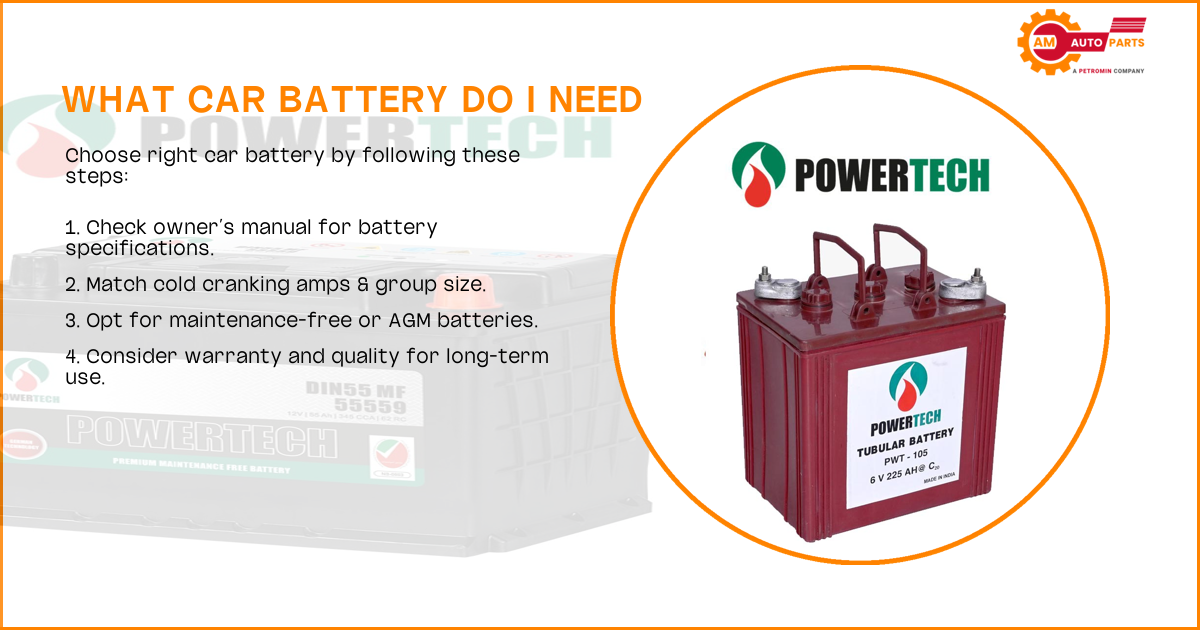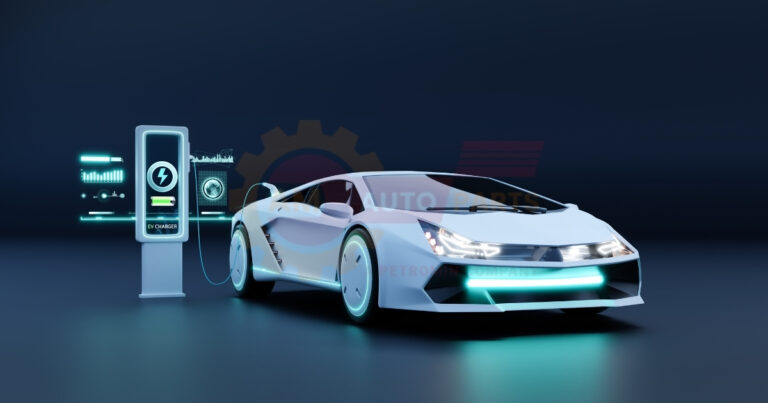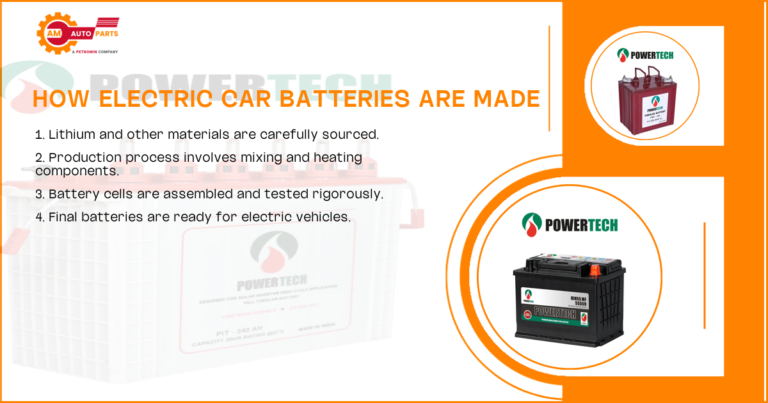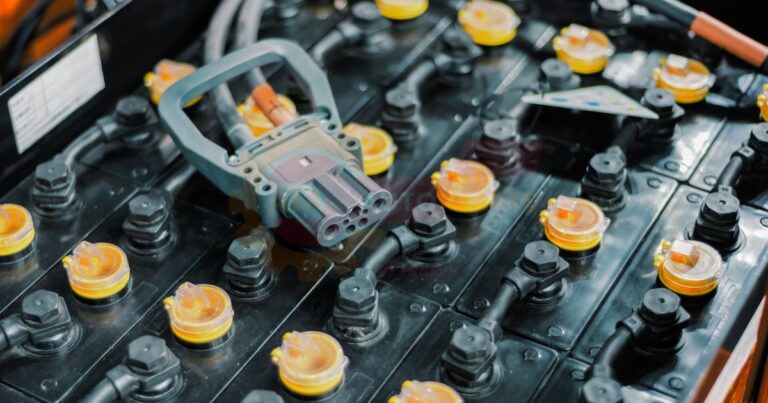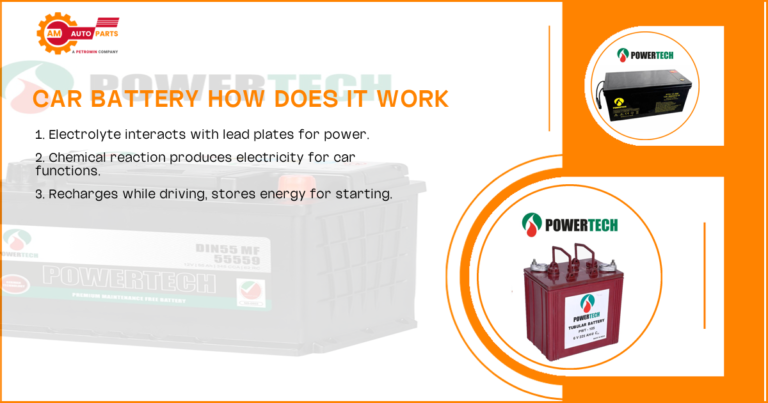What Car Battery Do I Need And What Car Battery Charger Do I Need?
Choosing the right car battery is crucial for your vehicle’s performance. A car battery is the heart of your vehicle’s electrical system, providing the necessary power to start the engine and run electrical components. Understanding the basics of car batteries can help you make an informed decision when asking, “What car battery do I need?”
Car batteries come in various types, each designed for specific needs and vehicle requirements. The most common types include lead-acid, AGM (Absorbent Glass Mat), and lithium-ion batteries. Each type has its own advantages and disadvantages, which we’ll explore further.
- Lead-Acid Batteries : Traditional and cost-effective, but require regular maintenance.
- AGM Batteries : More durable and maintenance-free, ideal for modern vehicles with high power demands.
- Lithium-Ion Batteries : Lightweight and long-lasting, but more expensive.
Battery Capacity and Cold Cranking Amps (CCA)
Battery capacity and Cold Cranking Amps (CCA) are essential factors to consider when selecting a car battery. Capacity refers to the amount of energy a battery can store, while CCA measures the battery’s ability to start an engine in cold temperatures. A higher CCA rating is beneficial for vehicles in colder climates.
- Capacity : Measured in amp-hours (Ah), indicating how long a battery can supply a specific current.
- Cold Cranking Amps (CCA) : Important for starting engines in cold weather, higher CCA is better for cold climates.
Battery Life and Maintenance
Battery life and maintenance are critical for ensuring your car battery lasts as long as possible. Regular maintenance can extend a battery’s life by up to 50%, according to the U.S. Department of Energy. Proper charging techniques and regular inspections are key to maintaining battery health.
- Regular Inspection : Check for corrosion and ensure connections are secure.
- Proper Charging : Avoid overcharging and deep discharges to prolong battery life.
Determining the Right Car Battery Size
Checking Your Vehicle’s Manual
Your vehicle’s manual is the best resource for determining the correct battery size. It provides specific recommendations for battery group size, capacity, and CCA. Always refer to the manual to ensure compatibility and optimal performance.
- Group Size : Refers to the physical dimensions of the battery.
- Capacity and CCA : Ensure the battery meets the vehicle’s power requirements.
Measuring Battery Dimensions
If you don’t have access to the manual, measuring the dimensions of your current battery can help you find a suitable replacement. Measure the length, width, and height to ensure the new battery fits properly in the battery tray.
- Length, Width, Height : Ensure the new battery matches these dimensions.
- Terminal Position : Check the orientation of the positive and negative terminals.
Considering Climate and Driving Conditions
Climate and driving conditions play a significant role in battery performance. In colder climates, a battery with a higher CCA rating is essential. For vehicles used in hot climates, a battery with a higher heat tolerance is recommended.
- Cold Climates : Higher CCA for reliable starting.
- Hot Climates : Heat-resistant batteries to prevent overheating.
Selecting the Appropriate Car Battery Charger
Charger Types and Amperage Ratings
Choosing the right car battery charger is as important as selecting the battery itself. Chargers come in various types, including trickle chargers, smart chargers, and traditional chargers. The amperage rating of the charger should match your battery’s capacity for efficient charging.
- Trickle Chargers : Provide a slow, steady charge, ideal for maintaining battery charge.
- Smart Chargers : Automatically adjust the charge rate, preventing overcharging.
- Traditional Chargers : Require manual monitoring to avoid overcharging.
Smart Chargers vs. Traditional Chargers
Smart chargers offer several advantages over traditional chargers. They automatically adjust the charging rate based on the battery’s condition, preventing overcharging and extending battery life. Traditional chargers, while cheaper, require manual monitoring and can overcharge if not used carefully.
- Smart Chargers : Automatic adjustment, safer for battery health.
- Traditional Chargers : Cost-effective but require careful monitoring.
Portable vs. Stationary Chargers
Portable chargers are convenient for on-the-go charging, while stationary chargers are ideal for home use. Consider your charging needs and lifestyle when choosing between portable and stationary options.
- Portable Chargers : Easy to carry, suitable for emergencies.
- Stationary Chargers : More powerful, ideal for regular home use.
Factors Affecting Battery and Charger Choice
Vehicle Make and Model
The make and model of your vehicle significantly influence the type of battery and charger you need. Different vehicles have varying power requirements, so it’s essential to choose a battery and charger that meet your vehicle’s specifications.
- Power Requirements : Ensure compatibility with your vehicle’s electrical system.
- Manufacturer Recommendations : Follow guidelines for optimal performance.
Driving Habits and Frequency
Your driving habits and frequency also impact battery and charger selection. Frequent short trips can drain a battery faster, requiring a charger with a higher amperage rating. Long-distance drivers may benefit from a battery with a higher capacity.
- Short Trips : Higher amperage charger for frequent recharging.
- Long-Distance Driving : Higher capacity battery for extended use.
Additional Power Requirements
Consider any additional power requirements your vehicle may have, such as aftermarket accessories or high-powered audio systems. These can increase the demand on your battery, necessitating a more robust battery and charger.
- Aftermarket Accessories : Increased power demand requires a stronger battery.
- High-Powered Systems : Ensure the battery can handle additional load.
How to Choose a Lithium Battery for Your Vehicle
Advantages of Lithium Batteries
Lithium batteries offer several advantages over traditional lead-acid batteries. They are lightweight, have a longer lifespan, and provide consistent power output. However, they are more expensive and may require specific chargers.
- Lightweight : Easier to handle and install.
- Long Lifespan : Lasts longer than traditional batteries.
- Consistent Power : Reliable performance over time.
Compatibility and Installation Considerations
Before choosing a lithium battery, ensure it is compatible with your vehicle’s electrical system. Some vehicles may require modifications for installation. Consult with a professional if you’re unsure about compatibility.
- Vehicle Compatibility : Check if your vehicle supports lithium batteries.
- Installation Requirements : May require professional installation.
Cost-Benefit Analysis
While lithium batteries are more expensive upfront, their long lifespan and consistent performance can offer cost savings over time. Consider the long-term benefits when evaluating the cost of a lithium battery.
- Initial Cost : Higher than traditional batteries.
- Long-Term Savings : Reduced replacement frequency and maintenance costs.
Battery Maintenance and Longevity Tips
Proper Charging Techniques
Proper charging techniques are essential for maintaining battery health and longevity. Avoid overcharging and deep discharges, as these can significantly reduce a battery’s lifespan. Use a smart charger to ensure optimal charging.
- Avoid Overcharging : Use a smart charger to prevent overcharging.
- Prevent Deep Discharges : Recharge before the battery is completely drained.
Regular Inspection and Cleaning
Regular inspection and cleaning can prevent corrosion and ensure your battery remains in good condition. Check for signs of wear and clean the terminals to maintain a strong connection.
- Inspect for Corrosion : Clean terminals regularly to prevent buildup.
- Check Connections : Ensure all connections are secure and tight.
Avoiding Deep Discharges
Avoiding deep discharges is crucial for extending battery life. Recharge your battery before it is completely drained to prevent damage and maintain performance.
- Recharge Promptly : Don’t wait until the battery is fully discharged.
- Monitor Battery Levels : Keep an eye on charge levels to avoid deep discharges.
Upgrading Your Car Battery System
High-Performance Batteries for Enhanced Power
Upgrading to high-performance batteries can provide enhanced power and reliability for your vehicle. These batteries are designed to handle increased power demands and offer improved performance.
- Enhanced Power : Suitable for vehicles with high power requirements.
- Improved Reliability : Consistent performance under heavy loads.
Dual Battery Setups for Increased Capacity
Dual battery setups can increase your vehicle’s power capacity, providing additional energy for accessories and extended use. This setup is ideal for off-road vehicles and those with high power demands.
- Increased Capacity : More power for extended use and accessories.
- Ideal for Off-Roading : Suitable for vehicles with additional power needs.
Battery Management Systems for Optimal Performance
Battery management systems (BMS) help optimize battery performance by monitoring and regulating charge levels. A BMS can extend battery life and ensure your system operates efficiently. Battery voltage range Automotive power assessment helps measure how strong a car’s engine is It tells us how fast and powerful a vehicle can be on the road
Car battery replacement timing Most car batteries last 3 to 5 years before needing replacement but this can vary based on climate and driving habits so it’s important to check your battery regularly and replace it when it shows signs of weakness Ideal car voltage A car battery should have about 12 to 14 volts for the vehicle to run properly
Charge depleted battery means your device has no power left You need to plug it in to recharge the Battery Issues Symptoms can include your device turning off suddenly or not holding a charge for very long
Car battery recommendations Choose a battery that fits your car’s size and power needs and replace it every 3 to 5 years to keep your vehicle running smoothly Battery selection guide Choose the right battery for your device by looking at size voltage and how long it lasts
- Monitor Charge Levels : Prevents overcharging and deep discharges.
- Optimize Performance : Ensures efficient battery operation.
Environmental Considerations in Battery Choice
Recycling Old Batteries
Recycling old batteries is essential for reducing environmental impact. Many retailers and auto shops offer recycling programs to ensure batteries are disposed of responsibly.
- Reduce Waste : Recycling prevents harmful chemicals from entering the environment.
- Participate in Programs : Many retailers offer battery recycling services.
Eco-Friendly Battery Options
Eco-friendly battery options, such as lithium-ion and AGM batteries, offer reduced environmental impact compared to traditional lead-acid batteries. Consider these options for a more sustainable choice.
- Reduced Impact : Less harmful chemicals and longer lifespan.
- Sustainable Choice : Consider eco-friendly options for your vehicle.
Reducing Carbon Footprint Through Proper Battery Care
Proper battery care can help reduce your carbon footprint by extending battery life and reducing the need for replacements. Regular maintenance and responsible disposal are key to minimizing environmental impact.
- Extend Battery Life : Proper care reduces the need for frequent replacements.
- Responsible Disposal : Recycle batteries to minimize environmental harm.
By understanding the various aspects of car batteries and chargers, you can make informed decisions that enhance your vehicle’s performance and reduce environmental impact. Whether you’re asking, “What car battery do I need?” or “What car battery charger do I need?” this guide provides the insights you need to choose wisely.
Frequently Asked Questions (FAQs)
What size battery does my car take?
To determine what size battery your car takes, consult your vehicle’s manual or measure the dimensions of your current battery. You’ll need to consider length, width, height, and terminal position. What car battery do I need, what car battery charger do I need, what size car battery do I need are common questions that can be answered by checking these specifications.
How do I know what amp battery charger I need?
The amp rating of your battery charger should match your battery’s capacity. Generally, a charger with 10-20% of your battery’s amp-hour rating is suitable. For example, a 50 amp-hour battery would require a 5-10 amp charger. Consider what car battery do I need, what car battery charger do I need, what size car battery do I need when selecting the appropriate charger amperage.
Can I use a higher amp battery charger?
While you can use a higher amp battery charger, it’s not always recommended. Higher amp chargers can charge batteries faster but may also generate more heat, potentially damaging the battery. When considering what car battery do I need, what car battery charger do I need, what size car battery do I need, it’s best to match the charger to your battery’s specifications.
How many amps should a car battery charger be?
Most car battery chargers range from 2 to 10 amps. A 2-amp charger is suitable for maintaining a fully charged battery, while a 10-amp charger can recharge a dead battery more quickly. When determining what car battery do I need, what car battery charger do I need, what size car battery do I need, consider your charging needs and frequency of use.
